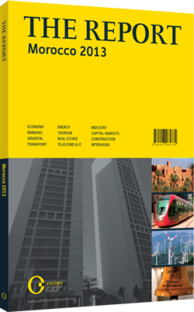OBG talks to Mohamed Lakhlifi, President, Federation of Information Technologies, Telecommunications and Offshoring (APEBI)

Interview: Mohamed Lakhlifi
How can broadband penetration be improved in rural zones and among low-income families?
MOHAMED LAKHLIFI: There is no single or magic solution that will achieve higher broadband penetration in rural zones and among low-income families – a variety of solutions will be required. If we assume that information and communication technologies drive economic growth, then this issue should be tackled in the form of a win-win partnership between the public and private sectors, in which the regulator should be playing a key role. By implementing a successful and useful framework with key policy options, it should be possible to help rural areas improve access to information. Improved access will help local communities to improve their standards of living when it comes to health, education and employment.
Morocco has now successfully introduced 3G technology, and 4G is steadily being implemented to improve bandwidth by the end of 2016. This will allow users to access more value-added services.
To what extent is IT infrastructure adapted to support cloud computing technology?
LAKHLIFI: Cloud computing will have two benefits. First, it will help to accelerate digitisation among small and medium-sized enterprises (SMEs) and very small firms. Cloud services pose fewer limitations than conventional technologies because one buys services rather than hard infrastructure, making it more cost-efficient. This is the advantage for the customer. Second, from a suppliers’ perspective, cloud computing will help to nurture a new kind of industry, providing information storage and management services.
What are the main challenges in implementing the Maroc Numeric 2013 strategy?
LAKHLIFI: This is a six-year programme, so it is not a surprise that on some aspects, there are delays in its implementation. Maroc Numeric 2013 is an excellent plan. At the same time, it is ambitious and needs to be judged by its outcomes. I believe the initial challenges pertain to governance and implementation capacity. There are many action items that concern a number of ministries, and coordination should be directed by a central office. Another point is that schools could be better equipped with software tools. SMEs could also benefit from improved access to software, though they should first have clear evidence that it will enhance their productivity. However, it is also necessary to assist companies in this process. It is not enough just to buy the technology; firms also often need to make a cultural transition and to adjust their work procedures accordingly.
As such, digitisation can become a catalyst for organisational reform, which will make companies operate more efficiently. In general, however, start-up SMEs are continuing to find it difficult to secure financing because the offshoring sector as it is now is starting to feel the pinch from the European crisis.
In what ways does the low digital literacy rate limit the success rate of projects?
LAKHLIFI: I do not think that the digital illiteracy rate as such is a limitation. In rural zones, in particular, there are people that are called “public writers”, someone who helps illiterate village inhabitants with formal correspondence by reading out or writing letters for them. Now imagine having such a writer in electronic form as part of the e-government project. People could then access government services with an electronic identity card, for instance, and those who need help could be assisted by a government employee. Digital illiteracy would then not be as much of a problem, compared to having to use one’s own computer. However, it is clear that we need an agency in charge of e-government. The UN’s e-government development index ranked Morocco as 120 out of 190 in 2012; the important point is not the score itself, but to understand the criteria behind the ranking and to deal with each of the shortcomings one by one.
You have reached the limit of premium articles you can view for free.
Choose from the options below to purchase print or digital editions of our Reports. You can also purchase a website subscription giving you unlimited access to all of our Reports online for 12 months.
If you have already purchased this Report or have a website subscription, please login to continue.

